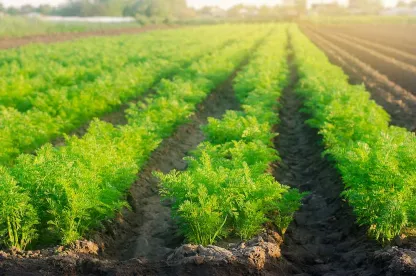-
Executive Order 14008 (“Tackling the Climate Crisis at Home and Abroad”), which was issued by President Biden in January 2021, outlined a set of coordinated actions to address climate change including a requirement that all federal agencies prepare a plan to identify the impacts of climate change on their mission and operations and propose steps to face these challenges. Pursuant to this Order, on October 7, 2021, USDA released its “Action Plan for Climate Adaptation and Resilience.”
-
The Plan identified five primary challenges that climate change will present to USDA and its stakeholders as follows:
-
Decreased agricultural productivity: Agricultural productivity is threatened directly through changes to temperature and precipitation patterns, as well as through secondary effects such as increased pest and disease pressures, decline in pollinator health, and reduced crop and forage quantity and quality.
-
Threat to water quantity and quality: Changes to the water cycle, including earlier snowmelts and more intense and frequent droughts, will alter crop and animal production as well as management of ecosystems.
-
Disproportionate impact on vulnerable communities: The impacts of climate change will be exacerbated in communities facing other challenges (e.g., health and environmental hazards) and their ability to adapt more limited by financial and other constraints.
-
Shock due to extreme climate events: Climate change is causing more frequent and disruptive events (e.g., wildfires and hurricanes), which can have significant impacts on agriculture and forestry.
-
Stress on infrastructure & public lands: The increasing frequency, severity, and extent of climate related disturbances can impact natural land and infrastructure on public lands.
-
-
In response to these vulnerabilities, USDA proposes the following adaptation actions:
-
Build resilience across landscapes with investments in soil and forest health. This includes conservation practices, improved water management and efficiency, and ecosystem restoration and management.
-
Increase outreach and education to promote adoption and application of climate-smart adaptation strategies. USDA aims to develop and deliver science-based and region-specific information and technologies to the communities that will be most affected by climate change.
-
Broaden access to and availability of climate data for USDA Mission Areas, producers, land managers, and other stakeholders. This includes supporting the collection and curation of climate change data and translating it into user-friendly models and recommendations.
-
Increase support for research and development of climate-smart practices and technologies to inform USDA and help producers and land managers adapt to a changing climate. Research priorities include evaluating the efficacy of adaptive practices and technologies on working lands, including their impacts on soil carbon storage and greenhouse gas emissions.
-
Leverage the USDA Climate Hubs as a framework to support USDA Mission Areas in delivering climate adaptation science, technology, and tools. The Hubs is a framework for connecting USDA partners on climate change issues.
-
-
USDA’s plan is one of more than 20 federal agency climate adaption plans that are shaping the federal response to climate change. We also note that the Department of Health and Human Services (HHS), within which FDA is situated, has also released a climate adaption plan.
USDA Announces Plan to Prepare for Climate Change
Tuesday, October 19, 2021
Current Public Notices
Published: 28 August, 2025
Published: 25 August, 2025
Published: 25 August, 2025
Published: 25 August, 2025
Published: 25 August, 2025
Published: 22 August, 2025
Published: 20 August, 2025
Published: 20 August, 2025
Published: 18 August, 2025
Published: 18 August, 2025
Published: 14 August, 2025
Published: 12 August, 2025
Published: 11 August, 2025
Published: 8 August, 2025
Published: 18 July, 2025



 />i
/>i
